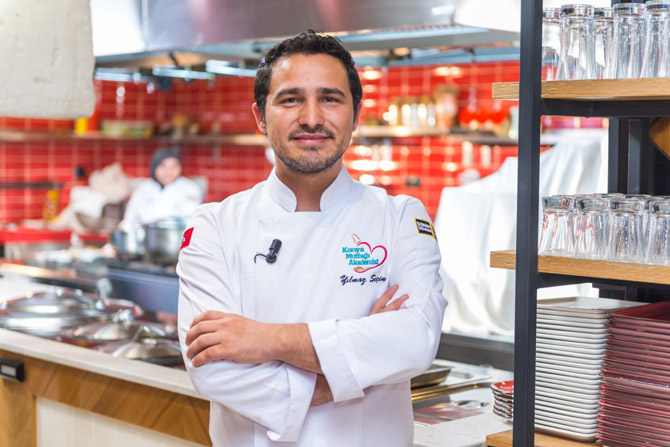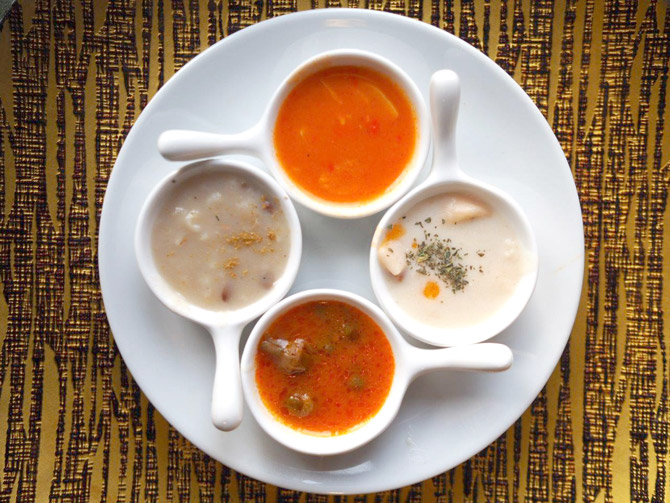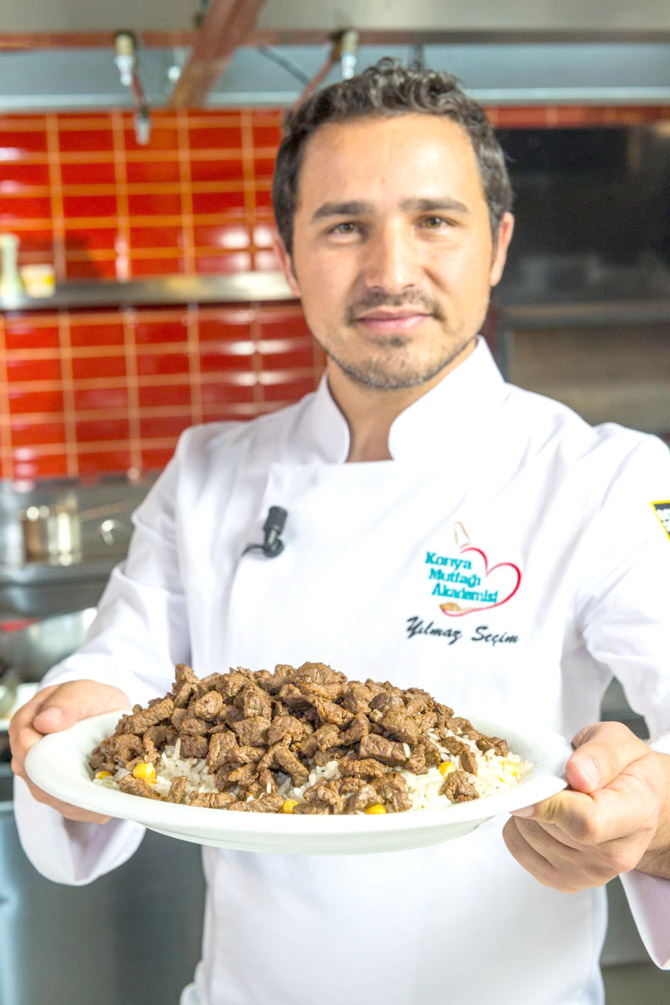Konya food culture shaped by Mevlevi cuisine!
Konya cuisine draws attention with its rich gastronomic history. The Mevlevi cuisine, kneaded with the influences of Seljuk and Persian cuisine and extending from Central Asia to Konya, constitutes one of the roots of today's Turkish food culture.

Konya cuisine draws attention with its rich gastronomic history. The Mevlevi cuisine, kneaded with the influences of Seljuk and Persian cuisine and extending from Central Asia to Konya, constitutes one of the roots of today's Turkish food culture. Some of the dishes that Mevlana mentions in his works are still cooked in Konya's cuisine today. Dr. Faculty Member Yılmaz Election said that the foundations of Konya food culture were laid with the Mevlevi cuisine.

Ateşbaz-ı Veli, who was the first cook to have a mausoleum in his name, made great contributions to the Mevlevi cuisine. During the Mevlana period, sherbets, jams and compliments were very common. Halva is known as Mevlana's favorite dessert. Circencubine, which increases appetite when served before meals and facilitates digestion when served after meals, is one of the most important drinks of the Mevlevi cuisine. Necmettin Erbakan University, Dean of Tourism Faculty and Department of Gastronomy and Culinary Arts Dr. Faculty Member Yılmaz Election said, "The Mevlevi cuisine culture started with His Holiness Mevlana, it developed with His Holiness Ateşbaz-ı Veli, and it was shaped by the people of Konya"

‘HOW WAS THE MEVLEVI KITCHEN?’
Stating that the Mevlevi cuisine was first formed with Mevlana, Dr. Faculty Member Yılmaz Election said, “For the first time, His Holiness Mawlana resided in some places while he was coming to Konya gradually. For example, it is known that he stayed in Elazig, Konya, Karaman. Konya was at a very good point, especially in terms of education at that time. It is one of the most important reasons for Mevlana's settlement in Konya. When Mevlana came to Konya, he took the cultures of the kitchens he passed through and came to that. At that time, it started to spread its own culinary culture slowly. Because a certain audience must have a certain eating habit. The influence of Mevlevi order in terms of the establishment of food culture in Konya is very great. It is a kitchen that was completely formed by the influence of his dignitaries and of course the people who were accepted to the Mevlevi lodge. The people of Konya have a great influence on the Mevlevi cuisine. When we think of all of these, the Mevlevi cuisine culture started with His Holiness Mevlana, developed with His Holiness Ateşbaz-ı Veli, and it was completely shaped by the people of Konya ”.

‘MEVLEVI KITCHEN HAS BEEN MOVED TO GENERATIONS’
Noting that the Mevlevi cuisine was passed down from generation to generation, Seç said, “There were no certain things in the Mevlevi cuisine at that time. For example, tomatoes and peppers are not used. Especially at the end of the 1800's, tomatoes and tomato paste, which dominated Konya cuisine, started to settle. When we look at that period of Konya, in the 1200s, His Holiness Mevlana generally used food from outside, villagers, townspeople, and urbanites. Since Konya is a granary, wheat has been used a lot. Materials obtained from flour have been used extensively. Animal husbandry was very common at that time. Especially mutton has been used a lot. When we look at the history of Konya, not much cattle meat was used. Lentils, chickpeas, beans were widely consumed. Basically, we know that all the foods grown in Konya region are used in Mevlevihane. These have been transported from generation to generation. At that time, the favorite dish of the Mevlevi cuisine was Hassaten Lokma. This is a dessert made only on Fridays. A cauldron unique to Hassaten Lokma was found in the Mevlevi cuisine. It is the favorite rice variety of Mevlana, ”he said.

‘TUTMAÇ SOUP HAS BEEN MADE AS COMMON’
Stating that Tutmac soup, which was used in Seljuk cuisine at that time, was widely made, Election said: “Yogurt was at a very important point at that time. Toyga is also made very widely. Toyga is a wedding dinner in Konya today. It came from Toyga Toy. Toy means fun and means the day people gather. At weddings, circumcisions and funerals, usually toyga is performed. We can think that the soup culture has developed very well in the Mevlevi cuisine. For this, there is a saying that "he had the soup waiting for the lodge". It would not be correct to say something clear about the food types of the Mevlevi cuisine. A meal was prepared as a result of external aid to the Mevlevihane. With the incoming materials, Ateşbaz-ı Veli created food using his own intelligence. Three types of cooking techniques were used in the Mevlevi cuisine at that time. They mostly used the steam cooking technique. Roasting technique and frying technique were also used. Animal fat was used in frying at that time. The frying process was done with tail oil or butter. That's why the meals have been very tasty. "

‘MEVLEVI CUISINE IS NOT PRESENTED ENOUGH’
Emphasizing that the Mevlevi cuisine was not promoted enough, Seç said, “With gastronomy reaching a very important point in the last 10 years, everybody in the world has started to introduce their precious dishes. Mevlevi and Mevlevi cuisine is also very important to us. Everyone is trying to make a certain promotion, but Hazrat Mevlana is now a name that has become a part of the world. Therefore, it is our most important duty to introduce the Mevlevi cuisine. For this, academic work is required. Unfortunately, social media still goes over the food that everyone knows. When Konya is mentioned, only meatballs or kebab come to mind. It is perceived as if there is no food in Konya other than this. Here, social media has great responsibilities. Apart from that, the cook is also very important. The cook should be able to express his / her food very well. He needs to know why he is cooking his food, from which period it comes from, and for which disease it is used. When we call a cook in the past, the physician comes to mind. Therefore, the low number of experienced cooks in the promotion of the Mevlevi cuisine in Konya, unfortunately, affects us negatively ”.

‘ATEŞBAZ-I VELI CONTRIBUTED TO THE WORLD'S CUISINE’
Advocating that Ateşbaz-ı Veli contributed not only to Konya cuisine but also to the world cuisine, Election said “Ateşbaz-ı Veli is also a very strong scientific name. Ateşbaz-ı Veli is the first and only chef in the world to be built in his name. We must be able to use such a name very well in the world community. Ateşbaz-ı Veli, who lived in the 1200's, created a kitchen department. If a new person comes to the kitchen, it is called a novice if he is a novice. When we look at today's cuisine culture, it is addressed as komi. As it is the first and most important chef in the world, we need to increase the recognition of this. While doing this, everyone should work in their own field. Since I am a gastronomist, I have to take it from the head of a cook, someone else should take it from a sociological point of view, another from a literary perspective, another from a theological perspective. "When we consider Ateşbaz-ı Veli in a versatile way, we will achieve a multi-directional development."
‘KONYA WILL COME TO GOOD POINT IN GASTRONOMY’
Election predicting that Konya will be in a good position in gastronomy said, “The Ateşbaz-ı Veli Symposium held by Konya Metropolitan Municipality and Necmettin Erbakan University in September was an important international study. As a result, we obtained a book about Ateşbaz-ı Veli. This book will be released next month. I think it will attract the attention of both people from Konya and anyone interested in the gastronomy profession. Many dishes belonging to Konya cuisine were also recognized in this symposium. For example, hemp halva is a kind of dessert made in Konya, but it is not known much. An article was written about him and about his wedding rice. In this sense, very good results were obtained. Especially the Metropolitan Municipality provides great support in terms of gastronomy. Konya will come to a much better point in the coming years. When you look at it, he ended his words by saying that it is one of the leading provinces that deserves the title of "gastronomy city"
SÜMEYRA KENESARI / YENİ HABER

